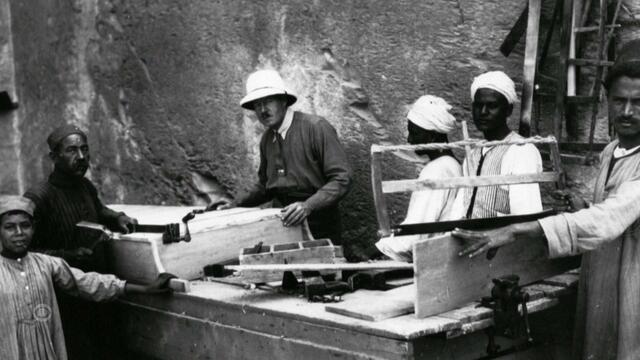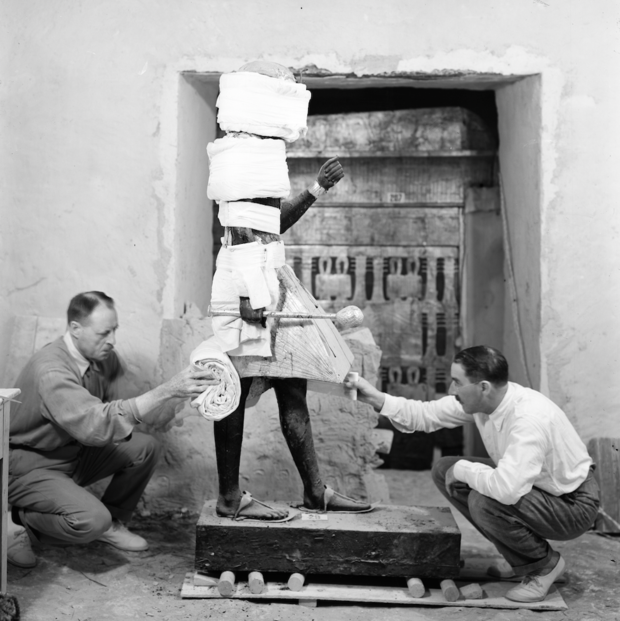▶ Watch Video: Exhibition shines light on forgotten workers behind King Tut tomb discovery
Unearthed in Egypt a century ago, Tutankhaman’s tomb instantly became one of the greatest finds in archaeology: a 19-year-old king in his burial chamber, left largely undisturbed, for over 3,000 years.
The discovery propelled English excavator Howard Carter and his photographer Harry Burton to worldwide fame, while the legend of the boy-king and his treasures made headlines and inspired popular culture for decades.
But these portrayals mask the reality of history, said Richard Bruce Parkinson, a professor of Egyptology at the University of Oxford.
“The myth of the Great White Hero is one of the colonialist stereotypes that haunts Egyptology … Indiana Jones, the mummy, the really vicious, unethical images of an academic discipline,” he said. “We want to try to contextualize this great discovery.”
Parkinson hopes to do that through a new exhibit at the university called Tutankhamun: Excavating the Archive, which aims to give credit to the dozens of mostly unnamed, uncredited Egyptian members of Carter’s team.
The exhibit includes photographs, letters, drawings and journals from an extensive archive created by the excavators, now housed at the Griffith Institute at the University of Oxford.
“The archive, of course, is a British archive,” Parkinson said. “It’s compiled in a colonialist period,” when Egypt was starting to become an independent nation.
From those archives, Parkinson put on display several pieces, like three photographs of an Egyptian boy, posing in a necklace from the casket.
“The problem is we don’t know his name,” he said. “We don’t really know much about him because it’s not recorded in the archives. … He’s little more than a mannequin.”
Other images in the exhibit show Egyptian team members unsealing doorways, conducting the post-mortem and transporting artifacts.
“They were very skilled, but they didn’t have, say, the university education that we would expect of an archaeologist these days,” Parkinson said, adding that because they couldn’t tell their own stories, most of them remained anonymous.
Carter did thank his four Egyptian foremen — Ahmed Gerigar, Gad Hassan, Hussein Abu Awad and Hussein Ahmed Said — but even today, curators cannot match their names with their faces in photographs.
Hend Mohamed AbdelRahman, professor of Egypt’s Modern and Contemporary History at Minia University is trying to identify more of the Egyptian workers. Using the archives at the Griffith Institute and speaking with descendants of the inhabitants of Luxor, where the tomb was found, she has collected the names of around 15 of what she believes were the approximately 200 Egyptian members of Carter’s team.
“Egypt is a motherland of … archeology,” she said, “and so they should make their place in this world.”
AbdelRahman believes that Carter actually kept a record of everyone’s name, but somehow, that record was lost.
“But I think one day we will find the full record of this tomb,” she said, “and it will be a real addition, because I think Carter was so perfect in recording everything.”
Back at the University of Oxford, Parkinson hopes the glimpses that the exhibit provides into the past will inspire others to fill in the blanks of history.
“We have not heard the end of the tomb of Tutankhaman,” he said.
The exhibit is set to run until early February 2023.



































